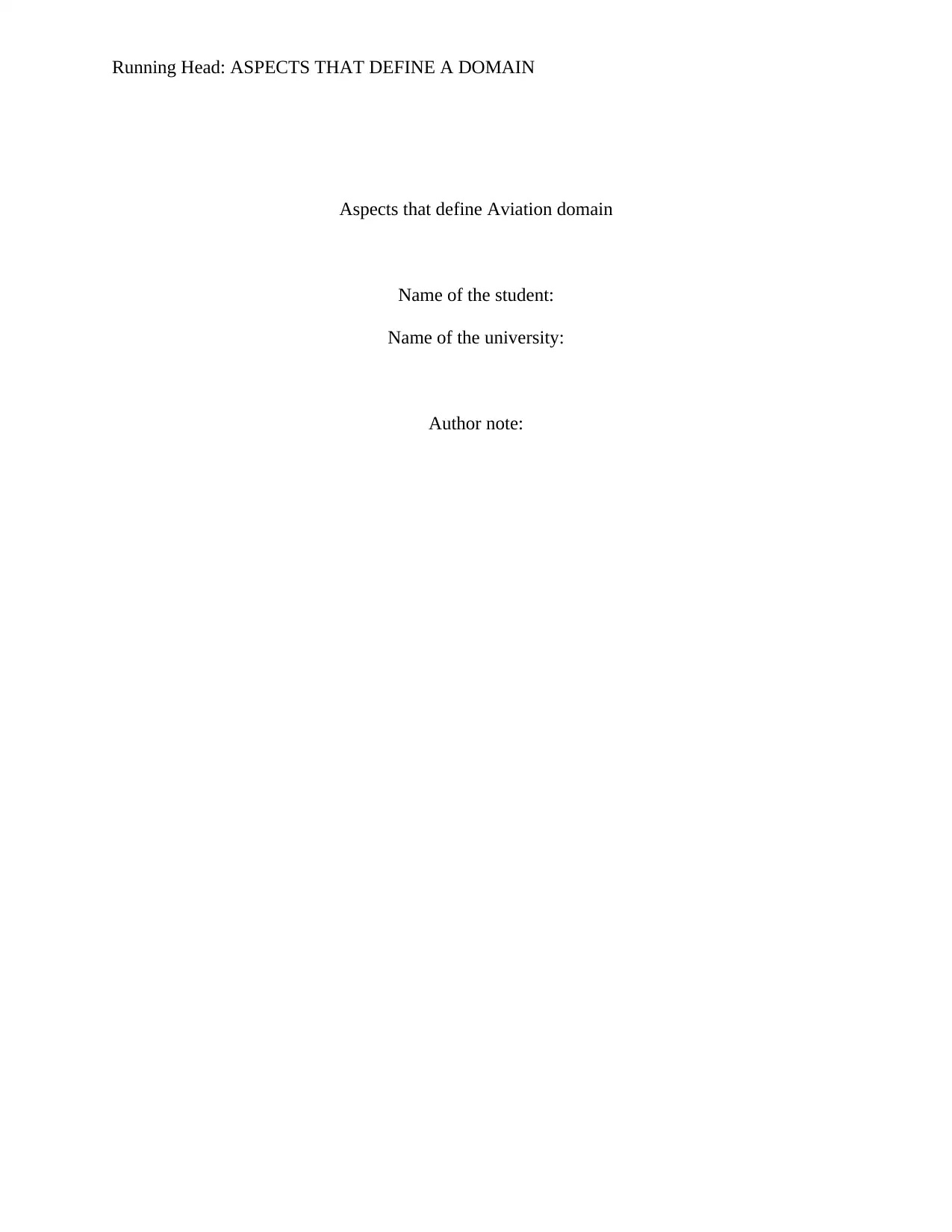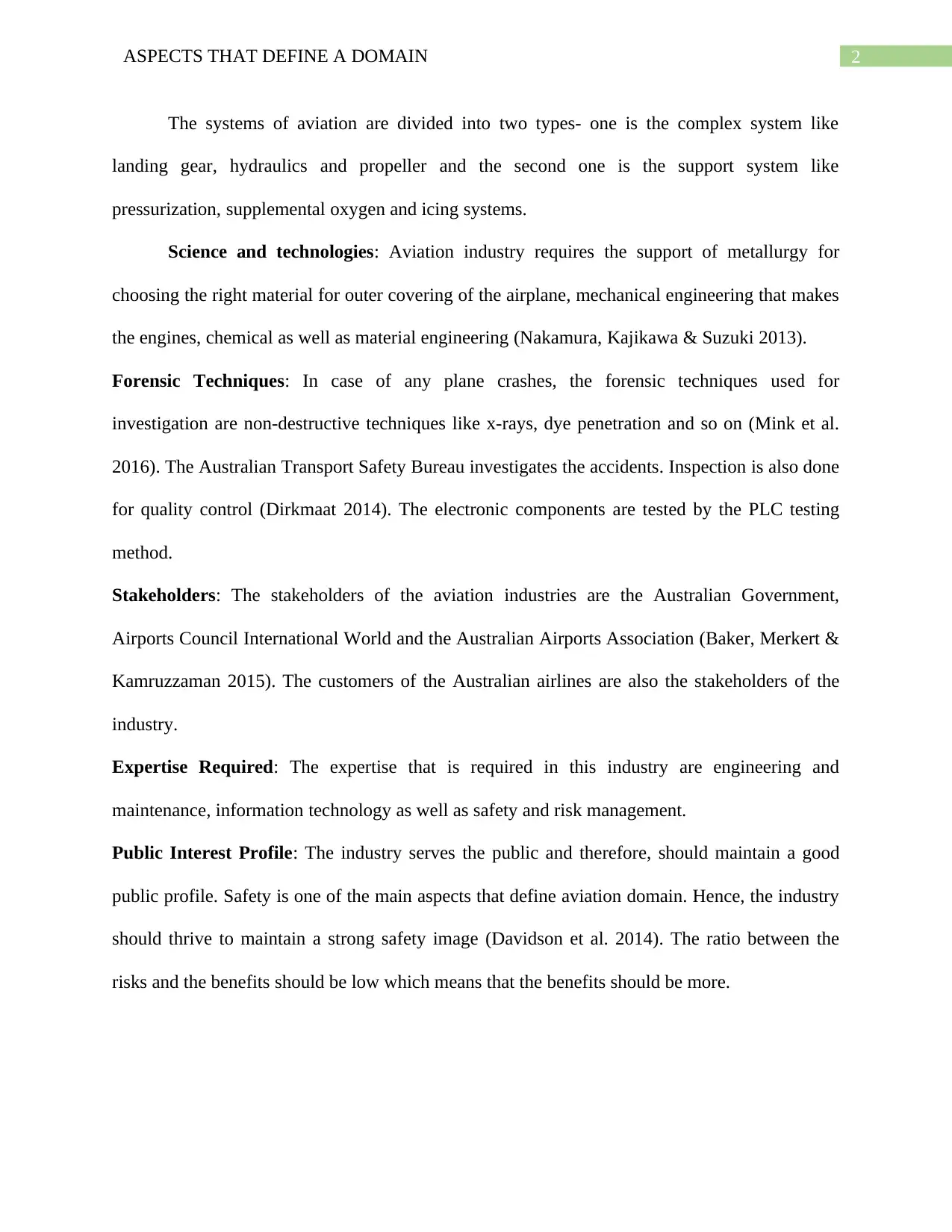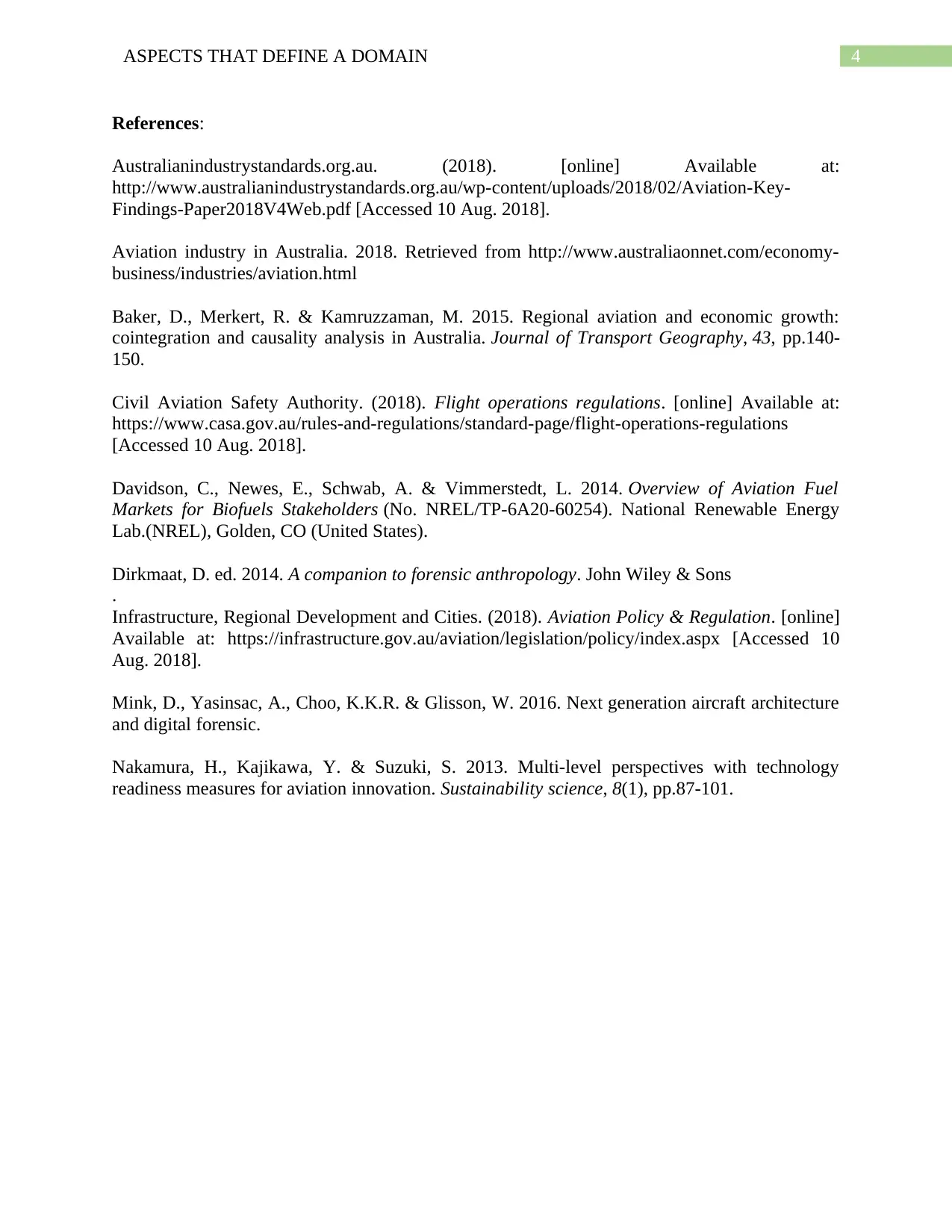CQUniversity AINV12004: Aspects of Aviation Domain Report
VerifiedAdded on 2023/06/08
|5
|912
|63
Report
AI Summary
This report provides a comprehensive overview of the aviation domain, focusing on the Australian context. It identifies the industries served by aviation, including transportation of passengers and cargo, and outlines the relevant laws and regulations set by the Civil Aviation Safety Authority (CASA). The report details the operational aspects, systems, and complexities of aviation, encompassing electrical monitoring, maintenance, and various support systems. It also highlights the role of science and technologies, such as metallurgy and mechanical engineering, as well as forensic techniques used in accident investigations. Stakeholders, including government bodies, industry associations, and customers, are identified, along with the expertise required in the field. The report emphasizes the importance of public interest and safety within the aviation domain, supported by a mind map visually summarizing the key aspects. References include various sources like Australianindustrystandards.org.au, Civil Aviation Safety Authority, and others.
1 out of 5












![[object Object]](/_next/static/media/star-bottom.7253800d.svg)